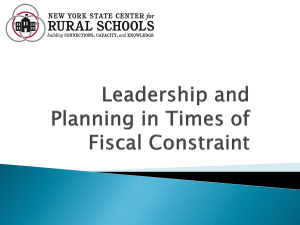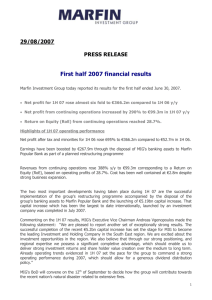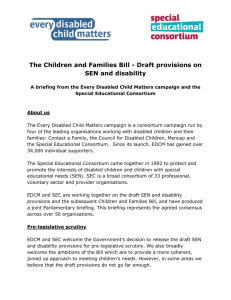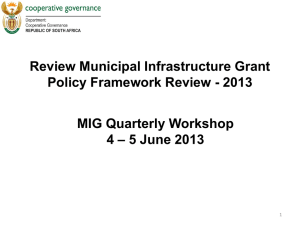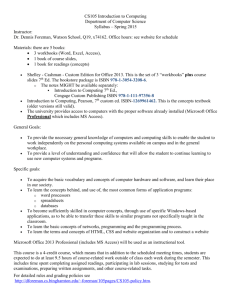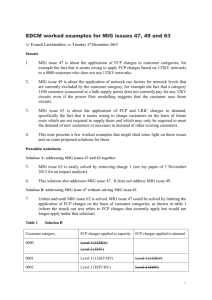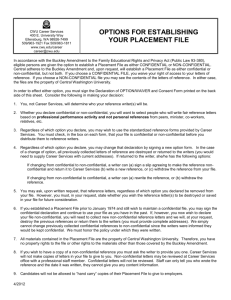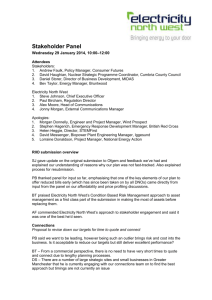MIG issue 70 "EDCM transparency" (2 pages, Microsoft
advertisement
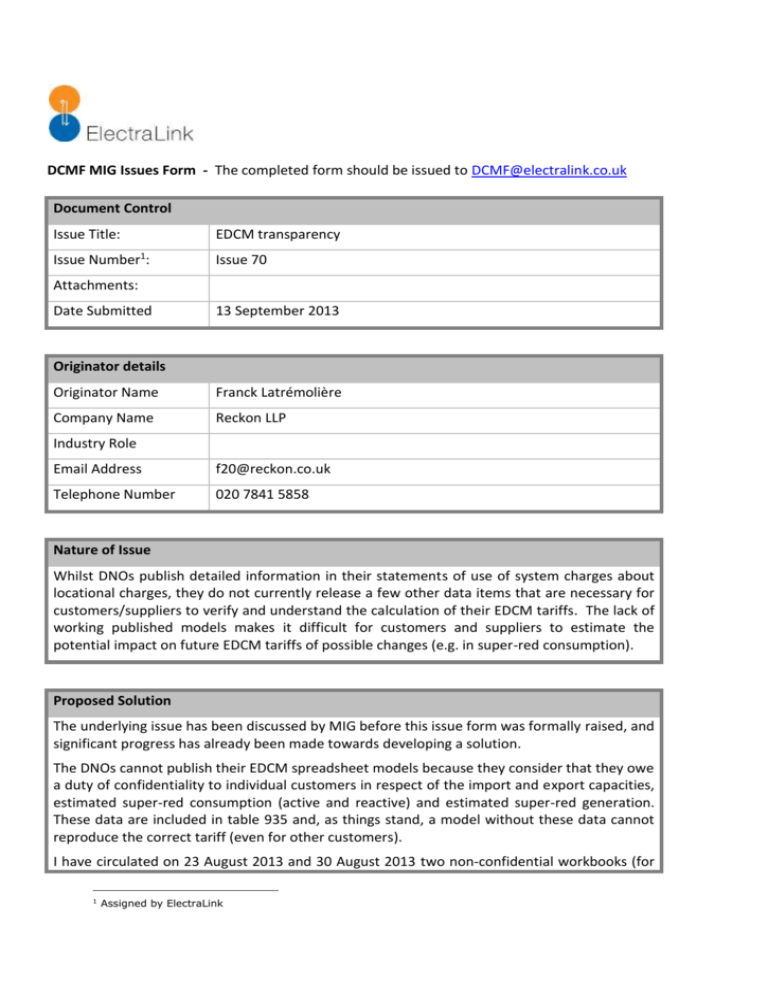
DCMF MIG Issues Form - The completed form should be issued to DCMF@electralink.co.uk Document Control Issue Title: EDCM transparency Issue Number1: Issue 70 Attachments: Date Submitted 13 September 2013 Originator details Originator Name Franck Latrémolière Company Name Reckon LLP Industry Role Email Address f20@reckon.co.uk Telephone Number 020 7841 5858 Nature of Issue Whilst DNOs publish detailed information in their statements of use of system charges about locational charges, they do not currently release a few other data items that are necessary for customers/suppliers to verify and understand the calculation of their EDCM tariffs. The lack of working published models makes it difficult for customers and suppliers to estimate the potential impact on future EDCM tariffs of possible changes (e.g. in super-red consumption). Proposed Solution The underlying issue has been discussed by MIG before this issue form was formally raised, and significant progress has already been made towards developing a solution. The DNOs cannot publish their EDCM spreadsheet models because they consider that they owe a duty of confidentiality to individual customers in respect of the import and export capacities, estimated super-red consumption (active and reactive) and estimated super-red generation. These data are included in table 935 and, as things stand, a model without these data cannot reproduce the correct tariff (even for other customers). I have circulated on 23 August 2013 and 30 August 2013 two non-confidential workbooks (for 1 Assigned by ElectraLink FCP and LRIC), which reproduce the calculations in the approved EDCM models with modifications that allow the model to return the correct tariffs for customers whose data has been fully populated, even if data for other customers are missing. This is achieved by requiring 14 non-confidential aggregate data items as additional input data; these aggregate data items can be calculated by the DNO by populating the spreadsheet with the full set of input data and changing one flag. The non-confidential workbooks allow customers to be added, removed or changed, and the formulas in the workbooks make appropriate adjustments to totals so as to match what the approved EDCM models would have calculated. The issue would be solved if DNOs would publish alongside their statement of charges the nonconfidential workbooks populated with the relevant generic and locational input data and the values of the 14 aggregate data items, but with customer-confidential information in table 935 removed; and then provide to each supplier, customer and prospective customer the table 935 data items that relate to their sites. Ideally, information to individual suppliers, customers and potential customers would be provided in an automatic way using an improved version of the customer information template that would integrate with the non-confidential workbook to facilitate scenario modelling. Target Implementation Date I propose development and implementation in two phases. Phase 1 would provide a basic solution by publishing non-confidential versions of the EDCM models. Phase 2 would deliver an improved version of the EDCM customer information template. September 2013 MIG: Accept the issue and this provisional project plan (meeting focused on CDCM issues). October 2013 MIG: Modify or confirm this project plan. Each DNO to confirm whether any redactions other than capacities, consumption and generation numbers are necessary. Review non-confidential EDCM workbooks and specify any necessary modifications. November 2013 MIG: No more than a brief update (meeting focused on CDCM issues). December 2013 MIG: Resolve any difficulty that might prevent any DNO to release nonconfidential workbooks alongside their indicative statements of charges. Start phase 2 by reviewing the current customer information template and specifying the general structure of an improved template and how it might integrate with the non-confidential workbooks. By 31 December 2013: DNOs publish non-confidential workbooks (end of phase 1). January 2014 MIG: No more than a brief update (meeting focused on CDCM issues). February 2014 MIG: Review proposed customer information template (which I would circulate in January 2014) and specify any necessary modifications. March 2014 MIG: No more than a brief update (meeting focused on CDCM issues). April 2014 MIG: Sweep up any residual matters and close the issue. (If anyone wants to ask DNOs to publish forecast information as well, or wants to bring these areas of information provision under DCUSA governance, then that would be a separate issue.) By 30 April 2014: DNOs finish sending improved customer information templates.
